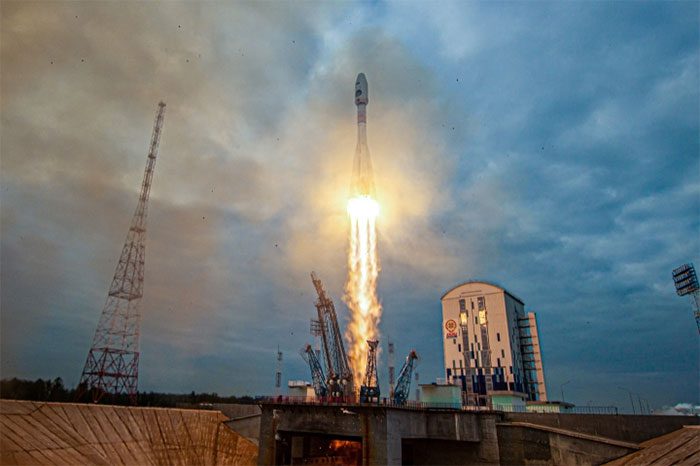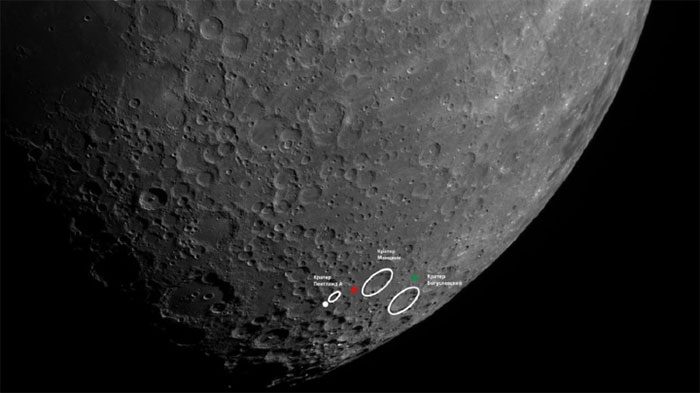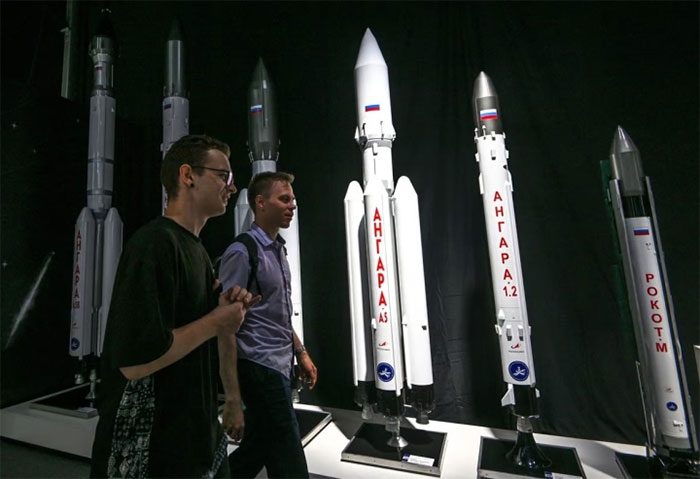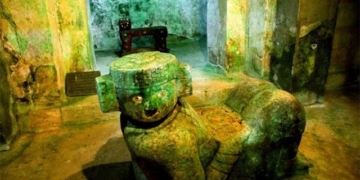At 2:10 AM on August 11th, Moscow time, the Russian Federal Space Agency, Roscosmos, successfully launched the Luna-25 spacecraft into orbit, marking the beginning of its first lunar exploration mission in nearly 50 years.
According to Roscosmos, Luna-25 is currently on schedule for its trajectory to the Moon, based on the signal sent back by the spacecraft on August 13th. Luna-25 is expected to land in the Moon’s south pole region on August 21st, or by the latest, August 24th.

The Soyuz-2.1b rocket successfully launched the Luna-25 spacecraft into orbit on the morning of August 11th. (Photo: Reuters).
Ambitious Plans
The rugged terrain of the Moon’s south pole makes landing spacecraft challenging. Although Luna-25’s flight to the Moon takes only about five days, it will spend more than a week in orbit (at an altitude of 100km).
While in lunar orbit, Luna-25 will identify potential landing sites. The selected position will be the Boguslavsky crater along with two backup locations.
If everything goes as planned, Luna-25 will spend a year collecting samples from the lunar surface.
Weighing 1.8 tons, Luna-25 carries 31 kg of scientific equipment and is equipped with eight cameras and a robotic arm.
The reason Russia aims to land in the less-explored south pole is not coincidental. Scientists believe there are ice deposits in the area where Luna-25 is expected to land. Additionally, the south pole’s continuous sunlight means solar panels can be set up there to generate energy for future missions.
The primary goal of Luna-25 is to achieve a soft landing in the south pole—something that other nations have failed to do so far. This aspect is crucial for ensuring the success of future missions.
Luna-25 will drill for traces of water to determine the need for transporting water from Earth for future crewed missions, as well as conducting scientific research.

Image showing the location where Luna-25 will land in the Moon’s south pole at the end of this month. (Photo: Roscosmos).
Alexander Bloshenko, the executive director of the long-term science program at Roscosmos, stated that water is believed to have arrived on the Moon through comets, and by analyzing ice deposits, scientists could “discover something new about the history of the Moon as well as the fundamental laws of the Universe.”
Luna-25 will also study radiation and lunar dust to use this knowledge to ensure safety for future crewed missions.
Lev Zeleny, head of the lunar program at the Russian Academy of Sciences, noted that Russia and its competitors will also search for rare earth elements on Earth’s satellite.
Luna-25 is part of the first phase of Russia’s lunar program. This initial phase, known as “Sortie”, aims to create a base module for a lunar station and test the “Eagle” crewed spacecraft. Three subsequent Luna missions will be carried out by Roscosmos over the next ten years.
During this phase, Roscosmos will also promote the super heavy rocket Yenisei.
The second phase will include the landing of Russian cosmonauts from 2025 to 2035. The crew is expected to spend two weeks on the Moon and lay the foundation for a long-term lunar base.
Ultimately, by 2040, Moscow hopes to complete the establishment of a lunar base and two observatories.
The Race to the Moon
Leading the way ahead of Russia in 21st-century lunar exploration programs are the United States, China, and India.
The Artemis program by the U.S. National Aeronautics and Space Administration (NASA) aims to establish a human presence on the Moon as a stepping stone for future Mars exploration. Washington hopes to create its own lunar base by the end of this decade.
Boeing’s super heavy SLS rocket is expected to be the primary vehicle for this program. Its first crewed test flight is scheduled for November 2024.
China’s plans are equally ambitious, with Beijing aiming to establish an automated lunar base by 2028 and send a crewed mission by 2030.

The current race to the Moon involves many powers, with the U.S. having the most ambitious plans. (Photo: Politico)
India has entered the “Moon race” in recent years. Their Chandrayaan-3 lunar lander has been orbiting the Moon and is expected to land simultaneously with Russia’s Luna-25 at the end of this month. New Delhi is also eyeing the south pole region.
India plans to send its next lunar mission in collaboration with Japan between 2026 and 2028.
Commenting on the launch of Luna-25, the Wall Street Journal noted that it marks the beginning of a new space race—similar to the competition between the U.S. and the Soviet Union in the 1950s and 1960s.
Politico provided a similar assessment, quoting an expert who stated that if the mission succeeds, it would be a “great scientific and technological achievement” for Moscow.
Western media has remarked that by becoming the first nation to land in the Moon’s south pole, Moscow would demonstrate to Beijing how advanced its space technology is. According to Politico, this will help solidify Russia’s position in the joint plan of both countries to establish a foothold on the Moon.
Similarly, France 24 asserted that Friday’s launch is a clear sign that “Russia hopes to re-emerge as a major player in the field of space exploration.” Additionally, Moscow’s lunar mission aims to send a geopolitical signal to the West.


















































